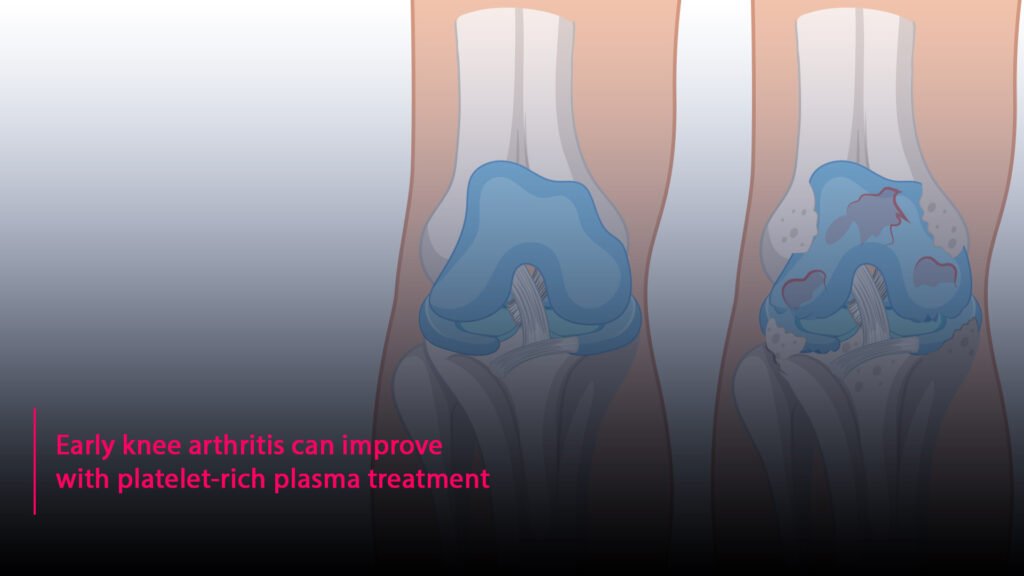Dr. Sandeep Patel, an Associate Professor of Orthopaedics at PGIMER, Chandigarh, recently earned the prestigious Gold Medal for Best Published Orthopaedic Research of 2024 at the 69th IOACON. His groundbreaking study explored how a single PRP injection aids knee osteoarthritis in guinea pigs, revealing its potential to reduce inflammation and protect cartilage. Dr. Patel has also published multiple studies defining the optimal PRP dose, termed “Superdose PRP,” and analyzing variables like dose and activation protocols, contributing significantly to advancing PRP-based osteoarthritis treatments.
How PRP Helps with Knee Osteoarthritis: PRP reduces inflammation and protects cartilage, delaying its breakdown in osteoarthritis.

Discovering the Best PRP Dose: Research identifies an ideal dose, called “Superdose PRP,” for achieving effective treatment outcomes in knee osteoarthritis.
Optimizing PRP for Better Results: Studies focus on improving PRP’s effectiveness through proper injection techniques, dose adjustments, and the use of activators.
In the last 10 months, we’ve published three international research papers on PRP and knee osteoarthritis in well-known journals. A notable study, released in February 2024, identified the “Superdose PRP” as the optimal platelet concentration for treating knee OA. Another clinical trial, published in May 2024, explored the use of an activator with PRP and concluded that adding an activator provided no additional benefit. Our goal is to better understand how PRP works for knee OA and continuously refine it to deliver the best outcomes for patients.
What does regenerative orthopaedics mean, and how is it being applied to patient care at PGI?
Regenerative orthopaedics focuses on using the body’s own cells to speed up tissue repair and potentially encourage regeneration. Although still in its early stages, global research is exploring ways to improve tissue healing. Techniques like platelet-rich plasma (PRP), bone marrow-derived mesenchymal stem cells, and gene therapy are some of the promising options. At PGI, these approaches are being applied selectively, particularly in conditions such as knee osteoarthritis, where there is supportive evidence of their effectiveness.
What are the mechanisms behind PRP therapy, and why is it beneficial? Additionally, what makes Superdose PRP unique?
PRP (Platelet-Rich Plasma) therapy can be an effective treatment for knee osteoarthritis (OA), helping to alleviate pain and improve joint function by reducing the inflammation that causes discomfort. In the early stages of knee OA, also known as Grade 1, the main symptoms are often persistent knee pain and swelling. At this point, the joint has not yet undergone significant wear and tear, and pain is usually the first noticeable sign. A simple X-ray can help determine the severity of the condition.
A clinical trial conducted by our department explored the benefits of PRP injections for treating early-stage arthritis. The results showed that using a higher dose of PRP—specifically 8 ml—can be particularly effective. This larger dose seems to stimulate the body’s healing process, sending signals to the tissues to repair and regenerate. This gives the body the boost it needs to kickstart recovery and reduce the discomfort caused by knee OA.
PRP (Platelet-Rich Plasma) therapy is known for its anti-inflammatory and regenerative properties, making it a valuable treatment for knee arthritis. For more effective results, an 8 ml dose of PRP, which contains around 5 billion platelets, is often used instead of the typical 4 ml dose. This larger dose is especially beneficial for the knee, as it is a large joint, and is most effective in the early stages of arthritis.
It’s important to note that PRP is not a painkiller, but a clinical treatment aimed at encouraging the body’s natural healing processes. During PRP therapy, blood is drawn from the patient, and the platelets are separated and concentrated. These platelets are rich in cytokines and growth factors, which play a crucial role in repairing and regenerating damaged tissues, helping to alleviate symptoms and promote recovery.
Your research discusses the dual impact.
Chondral remodeling refers to reducing cartilage wear, and it’s another key way PRP helps. It works by slowing down the death of chondrocytes (the cells in cartilage) and promoting the production of collagen and other important substances in the extracellular matrix. One challenge, however, is maintaining a consistent supply of these growth factors to the knee to keep the healing process going. This is where getting repeated PRP injections, spaced out every 12 to 18 months, can be an effective strategy to ensure lasting benefits over time.
What are the reasons for using it?
In young adults aged 45 to 60 who are in the early stages of osteoarthritis (OA) and do not have significant joint misalignment, Platelet-Rich Plasma (PRP) therapy can be a promising option. PRP, a treatment derived from a patient’s own blood, targets inflammation and supports cartilage health. However, it’s essential to consider other contributing factors to OA, such as obesity, genetic tendencies, and past injuries, which play a crucial role in the progression of the condition.
Managing expectations is key when discussing PRP with patients. It’s important to communicate that while PRP can help reduce pain and improve joint function, it is not a miracle cure or a solution for total cartilage regeneration. Patients should see it as part of a broader treatment plan, rather than a standalone solution.
PRP works best when combined with a multimodal approach to OA management. This includes lifestyle changes like maintaining a healthy weight, regular physical activity, and personalized exercise routines. By addressing these aspects together, patients can achieve better overall outcomes and enhance their quality of life.
What are you focusing on these days?
Our work focuses on exploring various injection techniques and specific knee areas to target with PRP, aiming to address different factors involved in the development of osteoarthritis (OA). Additionally, we are studying the composition and growth factor profile of Superdose PRP to gain a deeper understanding of its potential effects and benefits.
What tips do you have for protecting knee health?
Osteoarthritis, commonly known as joint degeneration, typically starts to appear after the age of 50. However, at the PGI, we’ve noticed a growing number of patients aged 45 to 50 showing more advanced joint wear and tear. A sedentary lifestyle can weaken muscles, but staying active improves blood circulation and supports joint health. To protect your knees, focus on eating a balanced diet, maintaining a healthy weight, avoiding self-medication, and seeking professional advice early when you notice symptoms.










